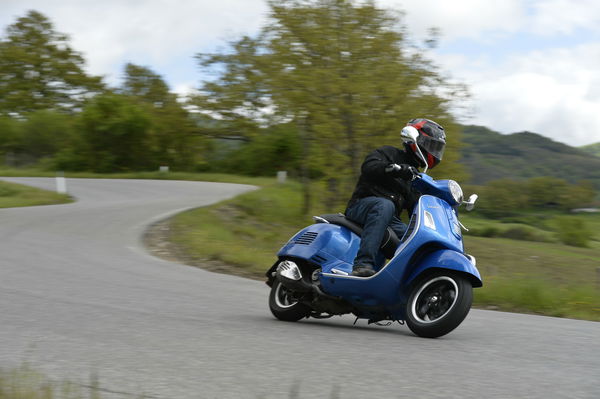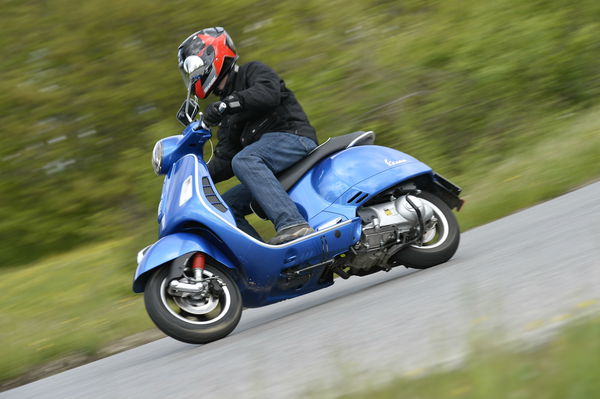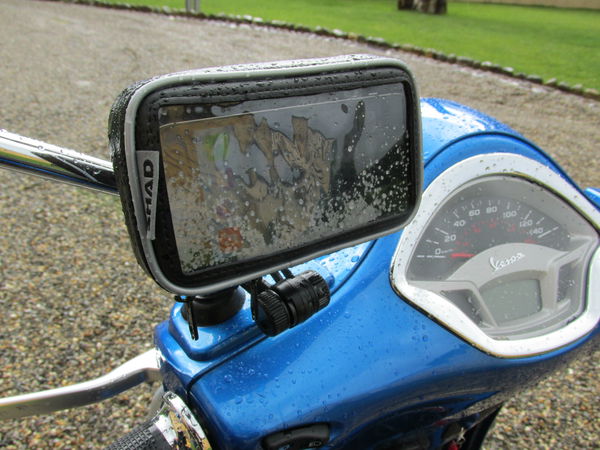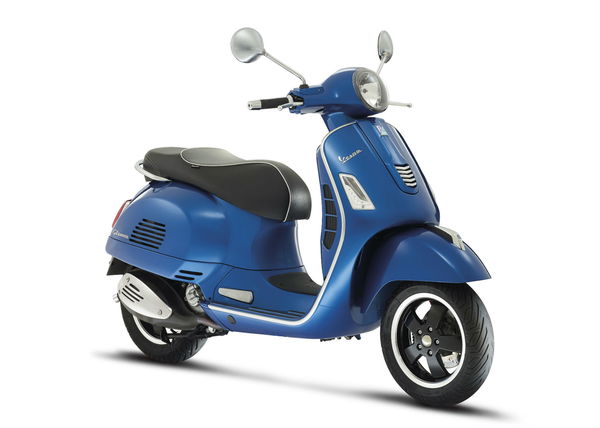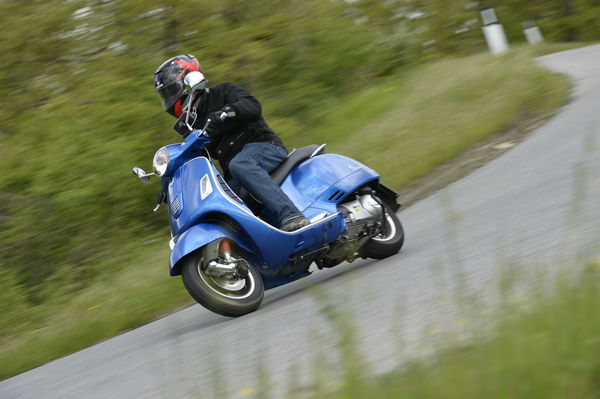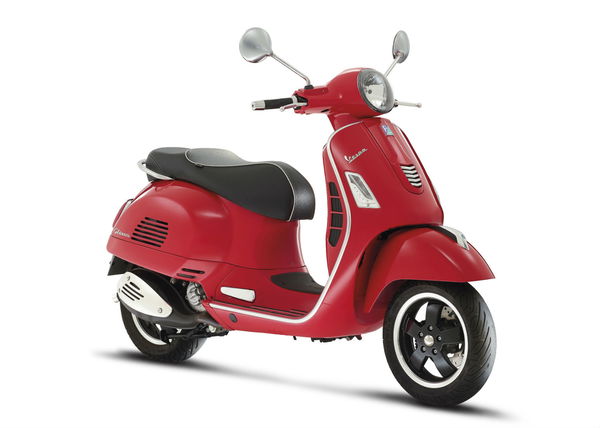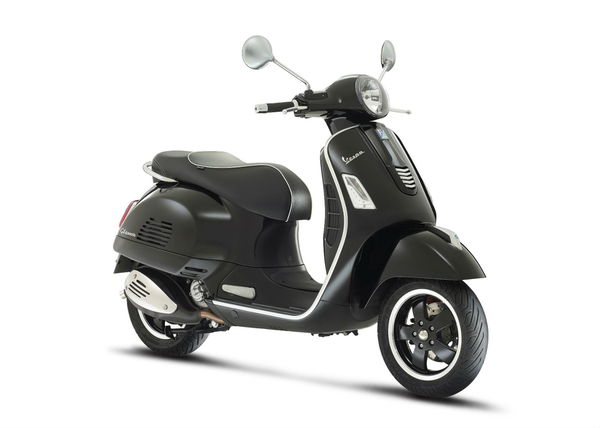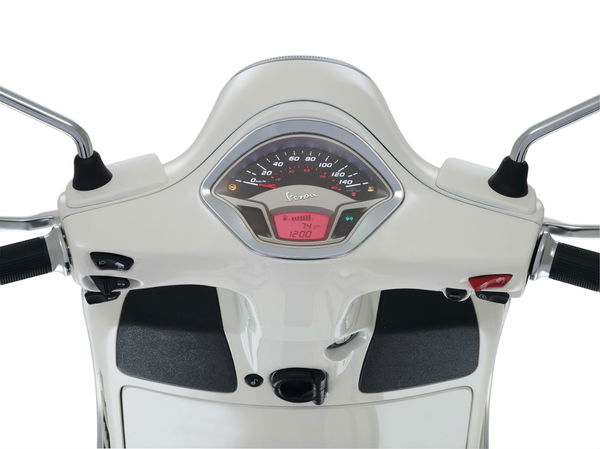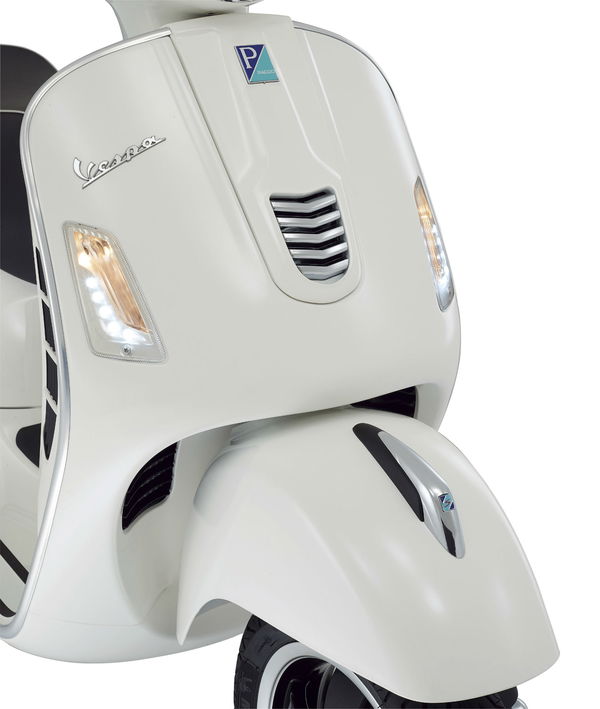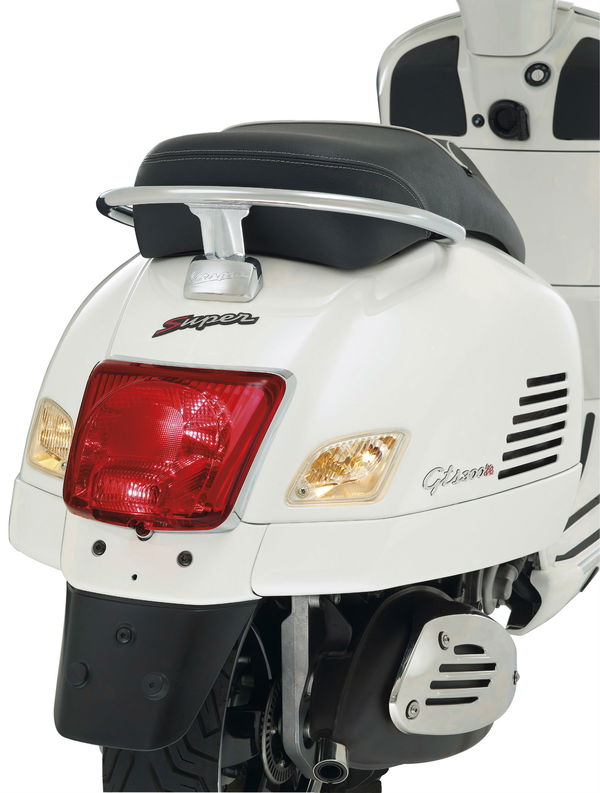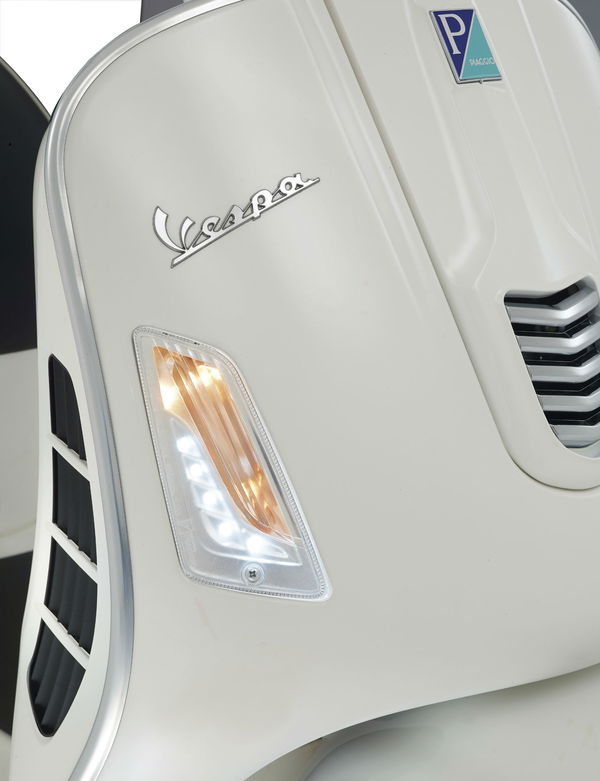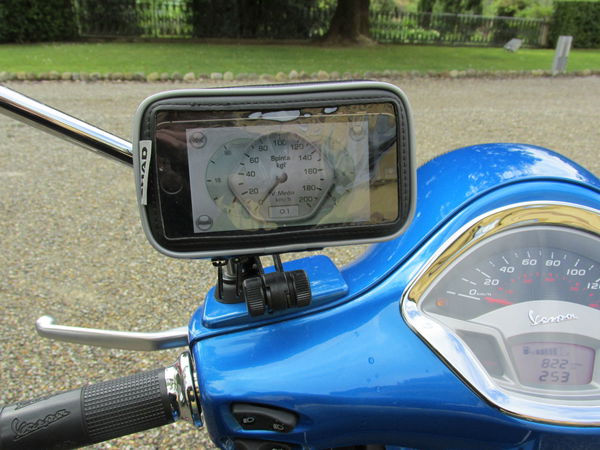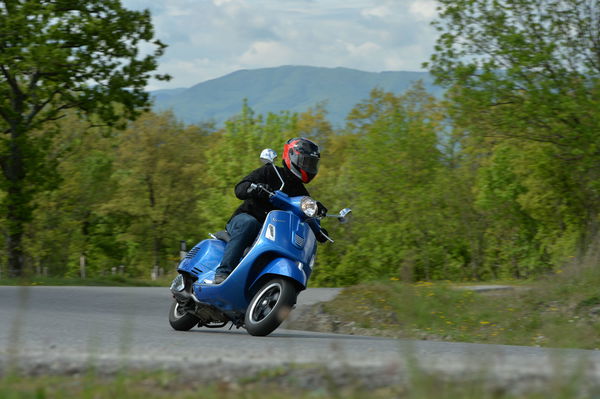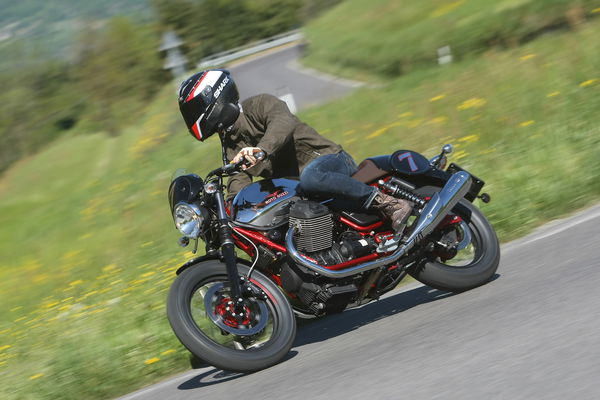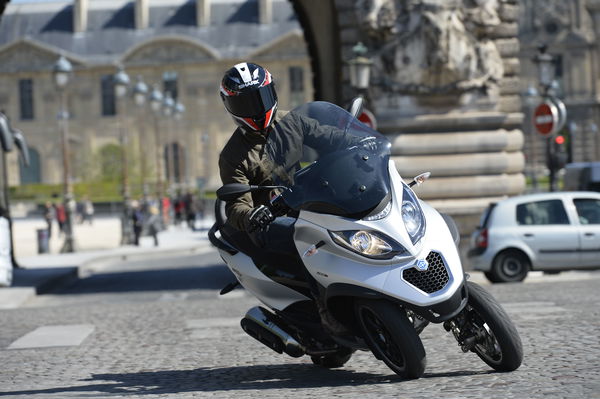First ride: Vespa GTS 300 Super review
UK's best selling big scooter gets traction control and ABS. Would extra power have been more useful?
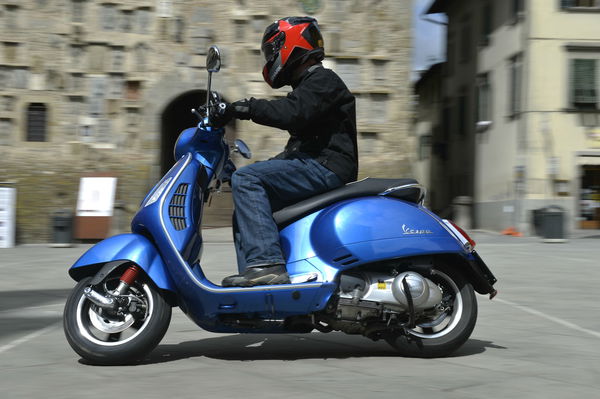

TRACTION control: once mainly the preserve of MotoGP, now found on several production sports bikes and super nakeds... and a 22hp scooter.
Vespa's traction control system, called Anti-Slip Regulation, or ASR, is one of a number of surprise new electronic options on the country's best-selling scooter over 125cc, the GTS 300 Super.
Others include ABS and the ability to wirelessly connect your smart phone to the scooter, and use it to display all sorts of information. But we'll come to that later.
It's also had subtle styling tweaks including a new rear light assembly with chrome surround, LED indicators, and a revised instrument panel and steering column cover, or 'tie', at the front.
Vespa have called it a 'facelift'. If they mean the kind of expert surgery you'd be hard pushed to detect, they're correct. There is a new blue paint option though.
The firm also says ASR is the world's only traction control system for a scooter. Not that surprising when you think about.
Actually it's not so daft. On the launch, in Tuscany, I felt the system reduce torque to the back wheel as it went over some ripples in a corner. Was the back end about to wash out? Absolutely not. But I can see that, in slippery conditions, ASR could save a rider and pillion from a scary moment, or even a crash.
On gravel, to test it, I held the throttle wide open for a moment from walking pace. The wheel slipped for an instant before torque was reduced and traction recovered. Then it span a tiny bit more before regaining traction again. This was pretty much exactly how Vespa had said it would work, allowing momentary loss of traction, detecting it and intervening, while maintaining acceleration. The effect was slow, controlled acceleration despite the hazardous surface and foolhardy throttle treatment.
The system is already available on Vespa's flagship 946, the 125cc scooter with an eight-grand price tag, as well as parent company Piaggio's Beverley 350 and X10 350 Executive. It feels quite sophisticated. On the GTS 300 Super it costs £250 on top of the base edition's £4,441. Is it worth it? Probably, considering you get ABS thrown in. The two use the same wheel speed sensors, so come as a package.
On the 125cc version of the GTS, which has had similar updates, it's an extra hundred pounds on the basic price of £3,871.
I'm not as convinced about the new smart phone feature. For £200, you get the ability to connect a phone to the scooter by Bluetooth. You also get a USB port on top of the glove box, in addition to one inside the glove box, so you can charge your phone while it's mounted on the handlebar. The necessary mounting bracket, smart phone and waterproof case are not included.
When connected, your phone becomes a 'virtual instrument panel', able to display things like how much torque and power you're using, your average and top speed and fuel consumption. There's a diagnostics screen, for telling you when something's wrong with the engine or your tyres are under-inflated. Mine simply said 'no anomalies'.
It can tell you how quickly you're accelerating. There's a lean-angle display, although this just uses the sensor within the phone. It's got a rev counter and sat nav, and more besides.
The trouble is, I could spend almost as long describing what's wrong with it.
Every time you switch the ignition off, the Bluetooth connection is broken. When you start the engine again, the app on the phone doesn't automatically go back to what you were doing. And while the touch screen is supposed to work through the waterproof case, it doesn't very well, so you have to take off your gloves, remove the phone and fiddle about - every time you start the bike.
When it rains, as it did on the launch, condensation collects inside the case, making the phone screen more difficult to see.
On most mornings, I believe owners would think, 'I'm just going to ride to work today,' and leave the phone in a pocket. The sat nav is obviously useful but a smart phone can do that anyway, without a £200 Bluetooth connection. Give me heated grips for my extra £200, any day.
It's nice to see a popular, stylish model getting updates. I think I'd rather Vespa concentrated on just making the GTS a more accomplished scooter, though.
I recently rode Kawasaki's new J300 scooter, essentially a re-branded Kymco Downtown 300i that costs a couple of hundred quid less than the GTS 300. It's a far more accomplished machine than the Vespa.
Where the Vespa begins to feel gutless above 50mph, and probably won't see north of an indicating 90, the Kawasaki can confidently overtake above 60 and will touch an indicated tonne flat-out.
Why couldn't Vespa have swapped the GTS' 278cc single for the engine from one of Piaggio's 350 scooters, making 33hp, five more than the J300? That would have been an update.
The answer may lie in the GTS' chassis and 12-inch wheels. It's really easy to throw into corners – too easy. It feels like a small scooter, more sensitive to input and lacking the stability of the J300, which has a 14-inch front wheel and 13-inch rear.
The Vespa's suspension, which has a new linkage arrangement on the front shock, also has a small scooter feel, with a sense of limited travel. It copes well despite that, and did a good job of smoothing out bumps on the launch ride.
The brakes, a single disc at the front and rear, have all the power, bite and feel needed.
But the under-seat compartment still won't accept a full-face helmet, despite being made bigger, where the J300's will.
The Vespa has a spring-loaded side-stand, the kind sometimes referred to as a 'suicide stand' because some owners will drop their scooter when it flips up at the wrong moment.
And the J300 has a small screen where the Vespa has none.
Of course, the GTS 300 doesn't need to be faster, better handling or more commodious than other scooters in order to keep outselling them. These are not the reasons people buy it.
People buy it for its looks, its traditional style and charm, some of which would be lost by giving it bigger wheels. In those areas, it's still class leader and deserved best seller - and no new Kawasaki is likely to change that.
You don't need me to tell you this, though. Just look at it.
Model tested: Vespa GTS 300 Super
Price: £4,441 (£4,691 with ABS and ASR)
Power: 22hp
Torque: 16.4lbft
Tank capacity: 9.5 litres
Seat height: 790mm
Colours: red, cream, black, blue
Availability: June
Read our Kawasaki J300 first-ride review
Sponsored Content
Latest Reviews
More Reviews


